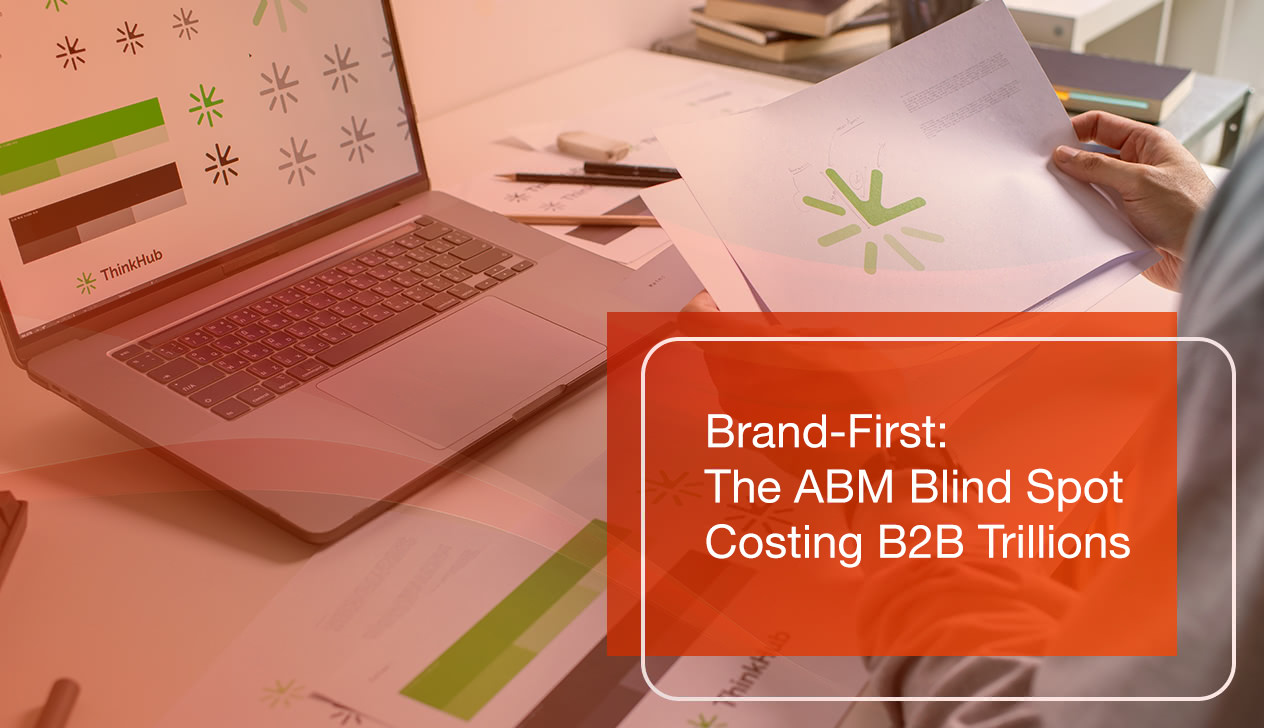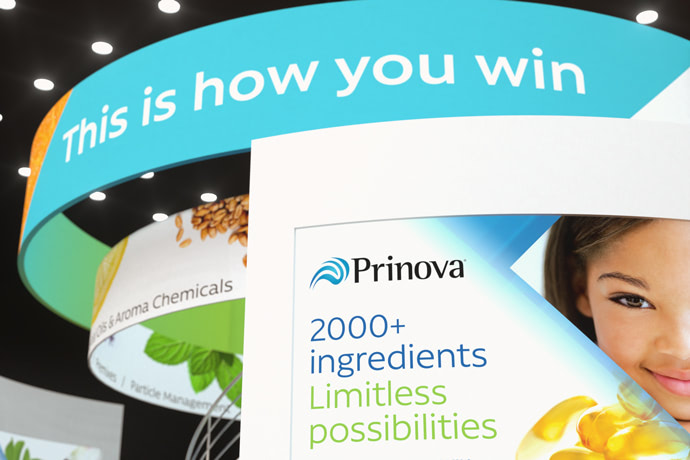Brand-First: The ABM Blind Spot Costing B2B Trillions

Account-Based Marketing (ABM) is not a recent innovation—Media Logic was applying its principles before the term existed. Today, 70% of B2B marketers have an active ABM program (REVNEW), reflecting its essential role in modern marketing strategy. While most B2B marketers hail success in driving revenue growth through ABM, the sobering reality is that 40–60% of B2B deals stall or fail (MI3), resulting in trillions of dollars in lost opportunity. Bain and the LinkedIn B2B Institute attribute much of this loss to focusing on the wrong people and metrics—and, even more fundamentally, to a lack of brand recognition.
Why Brand Recognition Is the Real Decider
The truth is, according to a Harvard Business Review Study, 90% of B2B buyers ultimately choose a vendor they had in mind before researching their purchase. This means that whoever that vendor is, they made a valuable and memorable impression — before the buyer was actively in market. While many CMOs focus on lead generation, Dentsu research shows that brand awareness supersedes performance marketing as the most crucial element in B2B marketing.
While content marketing is a building block of brand awareness, other factors like visual identity, emotional connection, and reputation need to be put into place first. Moreover, brands need to have physical and virtual exposure to open the door for content to do its thing, building thought leadership and triggering meaningful conversations. With the abundance of content in all segments, it’s common sense that people will gravitate first to content from brands they recognize. Inbox Insight’s research found that 90% of B2B buyers prefer to engage with content only from brands they know and trust, and only 52% are willing to share their details with those brands.
Brand recognition isn’t just a top-of-funnel concern; it’s essential at every stage and for every member of the decision-making team. Bain’s research found that only 4% of deals close when just the recommending function knows the brand, but a whopping 81% close when the entire decision group is familiar with it from the outset (MI3). For these groups, minimizing risk—what Bain calls “deal risk insurance”—is the driving force behind final decisions. This recalls the old adage, “Nobody ever got fired for buying IBM.”
Who Really Holds the Power?
Communicating your brand story to the entire decision group is imperative. In fact, 49% of decision-making power resides with “hidden buyers“(BAIN via LinkedIn—procurement, finance, legal, IT, and the C-suite—who rarely show up as leads and are primarily concerned with risk mitigation, not features or innovation. This means your brand must be visible, credible, and trusted by every stakeholder, not just product users or influencers.
The Power of Emotional Connection
Brand messaging that evokes trust and confidence is paramount. According to Google and Gartner, 71% of B2B buyers are more likely to do business with a brand when they feel a personal connection—driven by trust, confidence, and shared values. Emotional connection isn’t just a B2C construct; it’s a decisive factor in B2B as well. Media Logic’s experience confirms that emotional resonance can help challenger brands compete with larger incumbents, command higher perceived value, and shift conversations from price and features to strategic partnership.
Don’t Lose Your Brand’s Soul to Data
In today’s AI-first, digital-first environment, it’s easy for B2B marketers to become so focused on data-driven targeting and hyper-personalized messaging that they lose touch with the soul of their company—the very thing that cements emotional connection and long-term trust. AI can personalize, but it can also de-personalize if it strips away your brand’s unique voice and values. Digital-first is how you reach your audience; brand-first is how you win their confidence and business.
Is Your Brand Ready for ABM Success?
Before you launch your next ABM campaign, make sure you can answer “yes” to these brand-validating questions:
1. Is your brand’s visual identity memorable and consistent?
Does your logo, color palette, and design identity have a memorable impact and make your brand instantly recognizable across every channel and touchpoint?
2. Can every customer-facing person clearly articulate your company’s value?
Is your messaging cohesive across job functions, and can sales, field, support, and marketing all explain what makes you the better consideration?
3. Are you internally aligned to your ideal customer profile (ICP)?
Do your sales and marketing teams agree on who you serve best, so you’re unified on focus on the best-fit accounts? And some secret sauce for you – communicate your ICP to prospects, too, so they can self-qualify faster and don’t waste your time.
4. Do you understand the risks and stakes for buyers—especially hidden buyers?
Have you clocked the concerns of procurement, finance, and IT, and adapted your messaging to them?
5. Do you actively foster authentic human connections?
Are you building trust through thought leadership, physical presence, testimonials, and transparent communication?
6. Is your brand voice and visual style consistent across all touchpoints?
From website to sales enablement to customer success, is your brand instantly recognizable and reinforcing trust and confidence?
7. Do you follow through on your promises at every stage of the funnel?
Is your customer experience timely, responsive and consistent through every phase of the buyer cycle?
8. Do you reinforce your brand with customers after the sale?
From onboarding onward, are you delivering on your brand promise, nurturing relationships, and turning customers into advocates?
9. Do your brand KPIs measure influence across the entire buying group—not just leads?
Beyond MQLs, are you tracking awareness and engagement among all stakeholders, including hidden buyers?
Key Takeaway
A brand isn’t just a logo and tag line — it’s your “deal risk insurance,” your ticket to the shortlist, and your best defense against being overlooked by hidden buyers. In B2B, brand-first isn’t just a philosophy—it’s a competitive advantage.
How did you do with the questions in our checklist?
Whether you need a tune-up or an overhaul, if you are looking to enhance your brand, Media Logic speaks your language. We have developed winning brand identities for over 40 years, and we’d be happy to chat. Feel free to reach out to me at pniner@medialogic.com.






